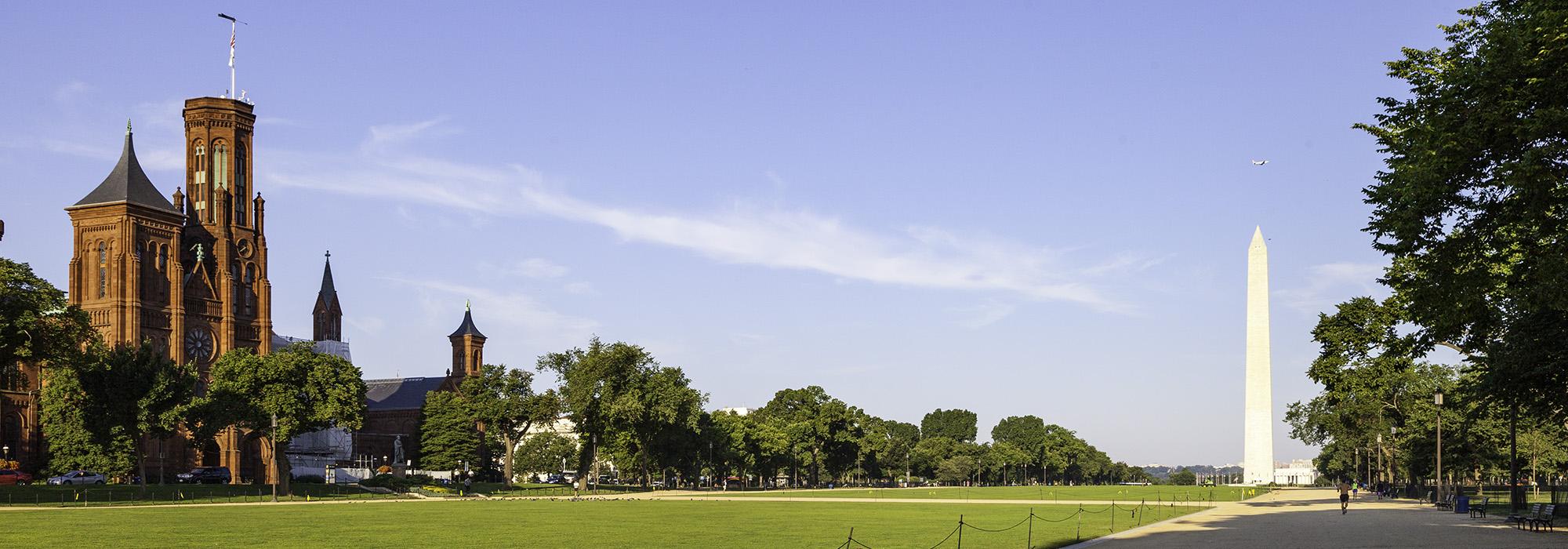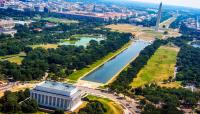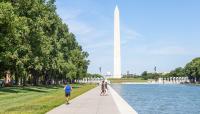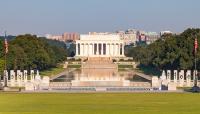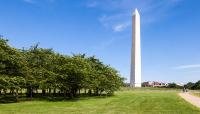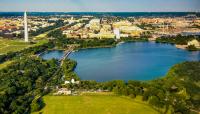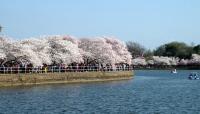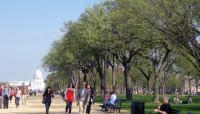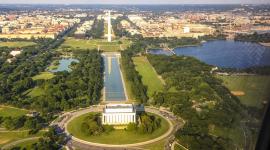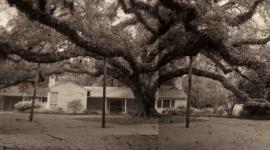Landscape Information
In Pierre Charles L’Enfant’s 1791 Plan for the Capital City, The National Mall was to be a 400-foot-wide, mile-long avenue anchored by the Congress House on the east and a statue of George Washington on the west. An east-west canal, built in 1820 on the north side of the mall, connected Tiber Creek to the Potomac River.
Railroad tracks were laid across the eastern section of the mall in the 1840s, severing the Capitol Grounds from the rest of the monumental space. In 1851 President Fillmore, concerned about the condition of the mall, commissioned Andrew Jackson Downing to design a public park. Downing’s design, never fully executed, combined naturalistic gardens with a museum of trees and shrubs, including a suggestion for an Evergreen Garden for the adjacent Monument Park, where groundwork for the Washington Monument was begun three years prior. During the Civil War, the mall grounds were used for military activities. The canal was removed in 1872 and, in 1888, the Washington Monument was completed on the mall’s western edge.
In 1902 the Senate Park Commission (known as the McMillan Commission) submitted a plan to Congress calling for the restoration, development, and improvement of the mall. The Commission, led by architects Daniel Burnham and Charles McKim, landscape architect Frederick Law Olmsted, Jr., and sculptor Augustus Saint-Gaudens, proposed a narrower 300-foot-wide greensward bordered on each side by four rows of American elm trees and lined by public buildings. In 1909 the railroad tracks were removed, restoring the continuity of the grounds. Completed in 1924, the Ulysses S. Grant Memorial, a bronze equestrian statue on a marble platform inlaid with bass reliefs, bookends the mall to the east.
In 2007 the nonprofit Trust for the National Mall was founded to raise funds for the mall’s preservation and engage the public through programming. Beginning in 2009 an interdisciplinary team led by design and engineering firm HOK, and including preservation landscape architects Heritage Landscapes, researched and mapped disturbances to the mall’s landscape over time, using this data to sensitively restore the mall’s turf, soil, and irrigation, and improve universal accessibility. The National Mall was added to the National Register of Historic Places in 1966 and had its listing boundary extended in 2016. The National Mall was added to the National Register of Historic Places in 1966 and had its listing boundary extended in 2016.



